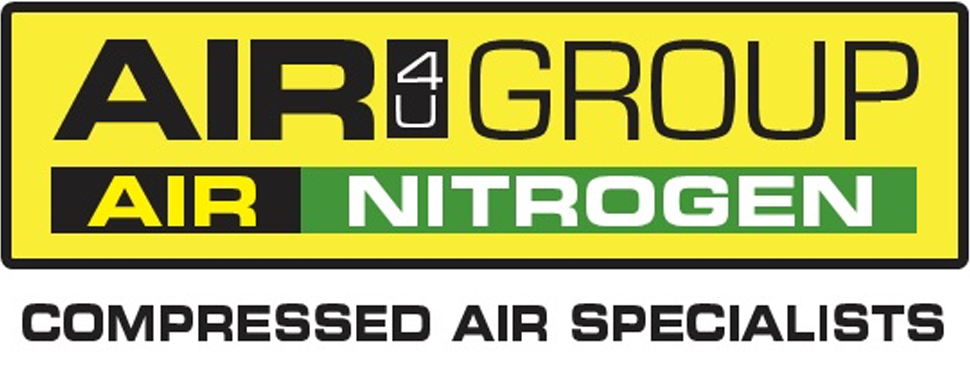Food and Beverage Grade Compressed Air

With the release of the latest "BCAS Best Practice Guide on Food and Beverage Grade Compressed Air", we thought what a good time to do a blog!
In previous blogs we have spoken about the importance of compressed air quality. As a utility, Compressed Air is widely used in the Food and Beverage industry for a diverse range of operations, from powering pneumatics, process, and automation equipment, to moving, mixing, and blending ingredients.
Contaminants commonly associated with Compressed Air are categorised in the form of dirt, water, and oil.
The risk to food and beverage from Compressed Air processes can potentially be significant if the right precautions and preventative measures have not been taken. Moisture, oil, and other particles all pose a risk in applications where compressed air is commonly used, such as drying and filtering.
There are two clearly identified sectors to the air purity requirements
- Air that comes into direct contact with the food (contact)
- Air that could come into contact with the food (non-contact)
Especially in areas where it can come into direct or indirect contact with food/beverage production equipment, ingredients, finished products or packaging, it needs to be carefully controlled, to prevent the risk of contamination.
For direct contact with food and beverage, in particular during production or processing, this requires a much higher level of contaminant control. For food and beverage production where the compressed air comes into direct contact, the amounts of oil present, and type of oil allowed is subject to strict controls. We stock a wide range of food-grade compressor oils. Some food/beverage producers have internal requirements where oil levels are strictly controlled.
Maintenance is another key element in ensuring that your compressed air/vacuum and nitrogen equipment maintain acceptable operating conditions. The controls applied to all types of contaminants may either be a customer requirement or one set by legislation.
Whether you need totally oil-free compressed air systems for sensitive applications in Food & Beverage processing, or “technically oil-free” with filtration or normal oil-injected compressors for general plant air, nitrogen generators, vacuum pumps or pipework, Air4u Group can help you with a tailored solution for your application.
On-site, food-grade nitrogen generation.
Discover the potential cost savings and other advantages of using on-site nitrogen generation for your Food and Beverage applications. You may also be interested in Nitrogen Generation for Modified Atmosphere Packaging
Whatever your needs, our team can advise on the right system for your process.
If you wish to find out any further information, please follow the link to send us an email at sales@air4ultd.co.uk
Also, why not check out our blog Why is Compressed Air Quality important?
https://www.air4ultd.co.uk/why-is-it-compressed-air-quality-important/
To obtain a copy of BCAS Best Practice Guide 102-1 Food and Beverage Grade Compressed Air, please follow this link:
https://www.bcas.org.uk/websiteform/bcas-best-practice-guild-102-1-11.aspx
We are hiring! Trainee / Apprenticeship opportunity
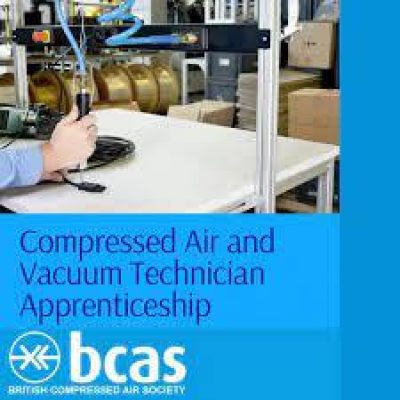
Trainee/ Apprenticeship opportunity
Working in conjunction with BCAS (British Compressed Air Society) and Semester we are looking to take on and train someone to install and commission compressed air and/or vacuum equipment and their associated systems. Furthermore, completing servicing, fault diagnosis, repair and to ensure equipment is operating and controlled at its optimum efficiency. In addition, they agree the work scope with the customer and handover. Included in this, detailing the work completed, providing technical and regulatory advice and any further recommendations. As such, they will complete a range of documentation/reports, including risk assessments and service records. The role requires practical hands-on engineering skills and good communication skills with colleagues, management, suppliers and end users.
The Compressed Air and Vacuum Technician Apprenticeship:
We will deliver the apprenticeship, at our offices in Arundel over a period of up to 3 years. Knowledge (Off the Job) will be delivered by distance learning online and will be available 24/7.
On the job, you will be carrying out the duties of a Compressed Air and Vacuum Technician, supervised by qualified personnel.
Applicants with a driving license would be preferred as the successful candidate would eventually be working as a mobile engineer and working at our customers' premises. They may use an allocated service vehicle, equipped with tooling and spares to travel to appointments. To start with they would be accompanying one of our existing engineers to customer premises while gaining experience.
Happy Anniversary to Air4u Limited!
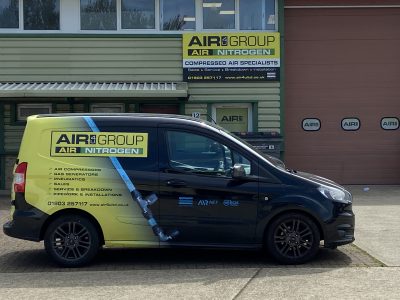
Air4u Limited is 8 years old this month! Where has that time gone?
At the start of 2014, Ian and Richard had a conversation about whether it would be possible to set up their own company. They were looking to offer Compressed Air Systems, Servicing and Maintenance in the Sussex area.
Once they had done their research into how this could be achieved and agreed that it was possible, they took the huge decision to leave their jobs and set up Air4u Limited. Following discussions with Atlas Copco, we were proud to be awarded distribution for the Sussex area.
In the beginning, it was just the two of them and they were working from home and had a container. Soon it became obvious that they needed more space. So they had a look around and decided to rent a unit on Ford Lane Business Park. They moved into this in 2015. It was then decided that another engineer was required, and Gary came on board.
In 2019, the decision was made to purchase the Unit and Air4u Limited became the owner of their own property. They renovated the unit downstairs to have a larger workshop area for the Engineers and a Trade Counter, selling a wide range of Tools and Equipment. Next they extended the mezzanine floor above which now has 3 offices, the Store Room and kitchen area.
It was decided that we could offer a range of Nitrogen Generation equipment and service and so Nitrogen4u Limited was formed as a separate entity in its own right.
Air4u Limited has continued to grow and they now employ another engineer, Steve, and an accounts/office person, Christine. We are currently looking to employ a trainee/apprentice to take us to the next exciting step in our journey.
We would like to say ‘Thank you’ to all our Customers and Suppliers, who have supported us during this time. Especially during the last 2 years and Covid-19.
If you would like any help, advice or information regarding Compressed Air Systems or Nitrogen Generation Equipment, please follow this link to send us an email: sales@air4ultd.co.uk
Flow and Capacity
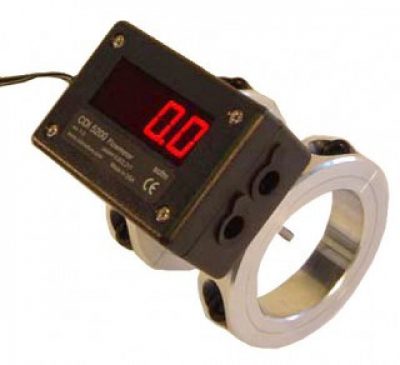
Following on from our previous Blogs, "How do I know what size of compressor I need" and "Pressure and Capacity", we are now looking at Flow and Capacity. Flow and Capacity are the way to summarise how much air is required for a task when using your Compressed Air System and the output of your compressor.
Flow
Flow is the ability of an Air Compressor to continuously perform a task. In the U.K., flow is typically measured in 'cubic feet per minute' (CFM) at a specific pressure.
Compressor Capacity
Compressor Capacity is the actual volume rate of flow compressed and delivered at the standard discharge point, at stated inlet conditions. This is usually expressed in terms of Free Air Delivered.
What are Litres/second, m³/min and CFM?
These are all different terms for flow. They all mean the volume of air that an Air Compressor can supply per minute. In other words, its flow or output.
How do I know what CFM I need?
The amount of CFM or flow required depends on the ability of the Air Compressor to perform a task within a particular amount of time.
A Compressor is under-specified, if it is not providing enough flow and you have to wait for pressure to build up in the reserve tank. Some applications require a constant air flow, while others require the Compressor to provide air only part of the time.
It can also depend on the type of Compressor you are using. Generally, Rotary Screw Air Compressors will put out more flow per kW than Piston Compressors will.
If you have a simple piece of equipment, the manufacturer should be able to provide data sheets that set out the amount of flow needed to operate it. However, this may not work with a more complex system.
When the compressor you buy does not have the capacity to match your tools, you will find yourself constantly waiting for the tank to fill up.
How do you work out the capacity required?
- Find the required CFM of the tool you will be using. This is usually found in manual or if you are buying new it should be found in the specification.
- If you are using more than one tool at the same time, you need to add up the required CFM for each tool.
- Once you have added up the CFM of the tools you will be using, it is good practice to add in a safety buffer. This is so the compressor will not be working at its maximum capacity all the time. So, multiply the final number by 1.2 and this will give you your airflow requirement.
For example, you are going to be using an Nail Gun (3.5CFM) and an Impact Wrench (4CFM) at the same time.
7.5CFM X 1.2 = A compressor with at least 8.7 CFM (FAD).
For peace of mind your best option is to ask a Compressed Air Engineer to carry out an energy audit of your system, so that the air compressor engineer can provide a bespoke solution. See previous blogs on Data Logging
For more information, please follow the link to send us an email at service@air4ultd.co.uk
Pressure and Capacity
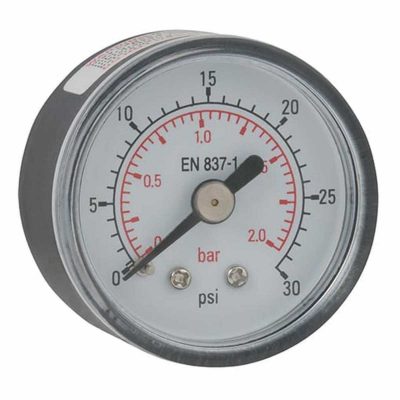
Continuing on from our previous Blog - How do I know what size compressor I need? We stated in the blog that Pressure and capacity are the two main specifications to look for when buying an air compressor. Pressure means 'how strong' and capacity means 'how much'.
What is Bar/PSI (Pounds per Square Inch)?
These are different terms for pressure used to measure an Air Compressor output. But in this case, it measures air pressure rather than air flow.
What pressure do I need?
In short, you will need enough pressure to provide sufficient force for your application. If your compressor cannot produce pressure at a high enough level, it will not be able to carry out the required task.
The PSI you will need will once again depend on your application and whether you need a constant supply of air. Large Air Compressors used in manufacturing will naturally operate at a higher PSI than a small compressor for household use. Most compressed air equipment is designed to operate at around 90-100 PSI (6-7 Bar). For this reason, most people only need a compressor with a maximum pressure of 7 bar.
If the pressure is too low, tools will not work. Too high, and it can cause unnecessary wear along with higher energy bills. As with flow, your best bet is to request a Data Logging Audit or Energy Audit of your system so that the air compressor engineer can provide a bespoke solution.
Did you know? Every one bar pressure reduction equals about 7% energy savings
What is atmospheric pressure?
This is the pressure exerted by the atmosphere. Although we are not aware of the atmosphere exerting a pressure on us, it does so!
What is gauge pressure?
This is the most commonly used value in the compressed air industry when referring to the pressure in a system or equipment. Compressors provide that the increase in pressure. A pressure gauge senses the increase in pressure and indicates it on a scale that for convenience starts at zero. Pressure gauges measure the pressure above atmospheric pressure.
A conversion widely used in the compressed air industry is: 1 bar = 14.5psi. A useful rule of thumb: 7 bar = 100psi
If you would like more information, please follow this link to send us an email: sales@air4ultd.co.uk
How do I know what size compressor I need?
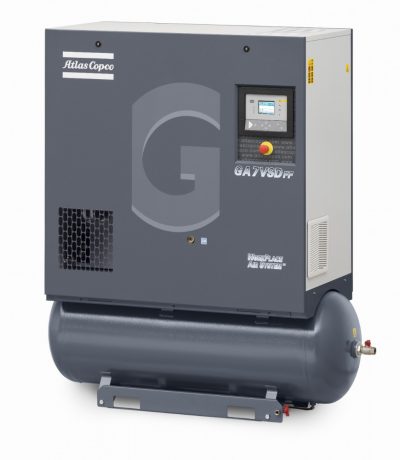
You are looking for a new Compressor and you know that compressed air can be a major contributor to your energy bills. But how do you know what size compressor is right for your application?
For this, it helps to understand the measurements of flow and pressure, and how they affect performance of an air compressor. As with any industrial purchase, it is best to seek out expert advice from a Compressed Air Specialist, such as Air4u Group, but here is our handy guide to give you an overview.
Pressure and capacity are the two main specifications to look for when buying an Air Compressor. Pressure means 'how strong' and capacity means 'how much'.
Why is it important to buy an Air Compressor with the correct Flow and Pressure.
Known as the fourth utility, compressed air can be a major contributor to your monthly energy bills, accounting for as much as 30% of your electrical power consumption. Therefore, you need to think carefully and get advice when you are making a new purchase or signing a new hire agreement.
Over-specification can mean spending more on capital equipment than you need to. So beware of the sales person who tried to push you into purchasing a bigger, more powerful machine than your application requires. At the same time, going for a cheap Air Compressor can lead to under-specification, with the result that it does not meet your needs and you end up having to replace it a short time later.
As well as cost benefits, purchasing the right Air Compressor will reduce downtime, increase productivity, lower your energy bills, and reduce lifecycle costs.
How do I choose the right size of Compressor for my application.
The temptation when replacing an old air compressor is to look at the kilowatt (kW) rating and buy 'like for like'. A better approach would be to work out the PSI and CFM - the pressure and flow - required for your application and select your model accordingly.
Choosing a machine with a high CFM does not automatically mean you are buying a better air compressor. The higher the CFM, the more powerful the compressor. But you may be paying for power you do not need, leading to higher energy bills. For example, a compressor with a small CFM will be sufficient for power air tools, but to operate the pneumatics in a manufacturing unit, you will need a Compressor that can pump out a significantly higher air flow.
Another variable is whether you are running or planning to buy a Variable Speed Compressor, such as those in the Atlas Copco VSD and VSD+ range. These can offer significant energy and cost savings, compared with traditional Fixed Speed Compressors.
Book a Data Logging Audit/Energy Audit of your system.
As previously mentioned, a Data Logging or Energy audit will help you establish what size compressor you need and the levels of CFM and PSI. These audits are usually carried out as a free service and consist of Data Logging your existing compressor and equipment. This gives accurate feedback on your compressed air demand, pressure and cycle over a set period of time. This identifies energy costs and where savings can be made. Data like this is crucial to help answer the question of what size compressor you need.
For more information on Data Logging, check out our blog on this subject https://www.air4ultd.co.uk/why-have-compressor-data-logging/
What else should I consider when buying a new Air Compressor?
Because the latest Air Compressors on the market make use of state-of-the-art technology and operate more efficiently, you may find that you need a machine with a lower kW output than your older model.
Also, there are many elements to a Compressed Air System, such as dryer, filters and pipework, along with pneumatics. Some of these may need upgrading to get the best results from your new Air Compressor.
Finally, do not forget to factor in any projected increase in use to future proof your purchase. For example, if you are planning to open a new manufacturing line or increase your production schedule to 24/7.
Keep a look our for our future blogs on Pressure and Flow/Capacity for more information.
If, in the meantime, you would like to discuss your requirements or would like more information, please follow this link to send us an email: sales@air4ultd.co.uk
What Compressor do you need?
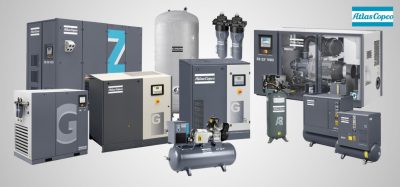
When deciding what Compressor do you need, there are a few things that need to be considered.
How does a compressor work?
Compressors take a gas, usually air, and to compress it they literally force it into a smaller space. Air compressors make use of electric motors, pistons,screws or sliding vane technologies to achieve this.
Once the air is compressed, it is stored in an air receiver (closed chamber), and then can be used either immediately or as required by the application. It is then channelled through pipes or tanks to power another tool far more efficiently than if the original source of energy was applied directly.
Compressed air can therefore be stored easily, where no other power is available and can also be used where other energy types cannot be used due to an explosion hazard or fire risk.
Compressed Air Applications
Air compressors are used to power devices or machines and pneumatic tools. Convenience, safety and practicality make the use of compressors ideal for powering a hot of machinery, from air tools to CNC machines, valves, dentistry equipment, diving devices, gas dusters or air brakes.
Types of Compressors
There are numerous types of compressor technology. Here is a quick guide to some of the most common ways or compressing air. Here at Air4u Group we are happy to visit your site and assess your needs and which type of compressor is best for your application.
Reciprocating (Piston) Compressor:
Pistons have a lower initial cost than the other types of compressors like screws. But, screws cost must less to operate over time. Energy efficiency - if both a piston compressor and a screw compressor were running the same number of hours, the screw compressor will be much more efficient and have lower operating costs that the piston over the lifetime of the compressor. Piston compressors are also typically very noisy.
Rotary Screw Compressor (available as oil-lubricated or oil-free):
There are three different types of screw compressors:
- Belt drive - motor is connected to the pump with a belt
- Gear drive - motor is connected to the pump through gears
- Variable speed drive - motor and compression pump are synchronised to produce precise amounts of compressed air.
What are the advantages of a rotary screw compressor? Rotary screw compressors differ from Piston compressors in the following ways:
- The flow capacity is much higher than that of a Piston compressor
- It can supply a continuous airflow, because of its lower internal temperature
- It produces less noise that a Piston compressor, because the moving parts are not in contact with each other
- Greater energy efficiency, leading to reduced running costs.
Vane Compressor
The advantages of a Vane Compressor are:
- Straightforward design and not so many moving parts
- Long life expectancy of as long as 100K hours
- Continuous air supply
- Easy on-site maintenance
- Small amount of oil needed for lubrication
They tend to be less efficient than modern Screw compressors. There is a limited range of capabilities in comparison to those offered by Rotary Screw Compressors.
In terms of turndown rates, speed range limitations and energy demand, the innovation embodied in advanced Rotary Screw Compressor technology provides a clear advantage in performance and compatibility in the era of a smart factory.
We will be uploading Blogs over the next couple of week with more information on "How do I know what size compressor I need", "Pressure" and "Flow/Capacity".
If, in the meantime, you would like to discuss your requirements or would like more information, please follow this link to send us an email: sales@air4ultd.co.uk
Common Air Compressor Problems
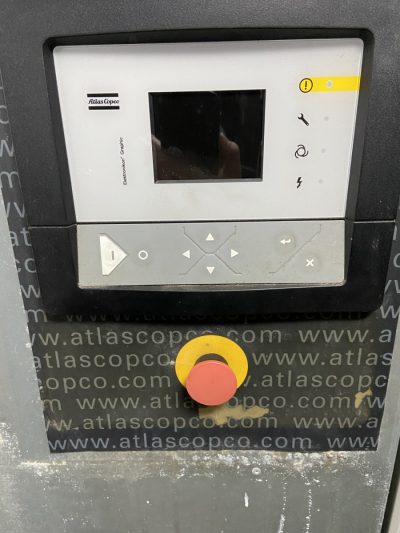
We often get phone calls from companies who are having a problem with their air compressor, which can easily be resolved with a quick chat with our Engineers. In this blog, we are going to let you know some of the most Common Air Compressor Problems and how you can fix it quickly, which could save a phone call.
The Air Compressor not starting.
A common problem is when you can not get your Air Compressor to start at all. There are a few reasons why this can happen, so it is easiest to run through this trouble shooting list from the simplest to most difficult fix.
No Power
Check and make sure the compressor is plug in and power is on. Check the mains and control fuses, replacing if necessary. It it is still not working, press the reset button.
Emergency Stop Button
Believe it or not, we are regularly called out because customers have pressed the 'EMERGENCY STOP' button to switch the compressor off, rather than the stop button. The 'EMERGENCY STOP' button remains latched in. The compressor is vented and the machine is prevented from re-starting.
You need to turn the 'EMERGENCY STOP' button in the direction of the arrow to unlatch it. Press the 'Reset' key to delete any existing alarm messages and switch the machine on.
Low Oil
It is easy to forget to change the oil on an air compressor, but the results can be dramatic. This is why we always recommend a regular service schedule. If your air compressor will not start, and the power is not a problem, check and top-up the oil.
Overheating.
Air compressors overheating is one of the most common causes of failure, even with compressors that might otherwise last for many additional years. So, what could be the cause of the compressor overheating?
Plant Room Temperature.
If direct sunlight falls on your air compressor, and there is inadequate ventilation around it, this can make your compressor to overheat. As a general rule, air compressors are designed to operate in an environment where the temperature remains between 5'C and 40'C. Normally, the maximum ambient temperature of the room that a compressor is in must be lower than 40'c to 45'C, even at the hottest times of the day.
Compressors with no ducting will exhaust hot air into the room, heating up the space if there is not adequate air flow/ventilation (both into and out of the room). In the worst case scenario, the compressor's cooling fan will suck in the already heated air, which will form a circuit of recycled exhaust air. This will quickly cause the compressor to overheat.
Low compressor oil levels can lead to overheating.
You should check your oil level on a regular basis to ensure that there is sufficient oil for the compressor to operate efficiently. Oil lubricated compressors pass small amounts of oil during operation. If the oil level is too low, the machine will not have a proper flow through the cooler. Thus, is could easily overheat. Check your air compressor oil at least once a week to make sure that it is at the correct level. The manufacturer's manual has instructions for proper oil check procedures. Our Engineers will also top-up the oil during any preventative maintenance visits as necessary. We keep most types of compressors oil in stock if required.
Blocked Coolers.
If the compressor operating temperature is too high, it may be that the Cooler (or radiator) could be dirty. A quick fix is to blow the cooler out in the reverse direction of the air path to get your machine up and operational. To do this, you can blow cool air through the cooler. You can use a reduced pressure blow gun or air line to do this. If the pressure is too high, you can damage the cooler.
If it is beyond this point, the fix may involve removing the cooler to have it properly steam cleaned. During a preventative maintenance visit, our engineer will clean the cooler as required.
Thermostat.
The thermostat or thermostatic valve is one of the most vital compressor parts. It enables the system to measure and respond to changes in the air temperature inside the unit by controlling the flow of oil, keeping your air compressor running smoothly and effectively.
Thermostatic valves sense the temperature of the oil and decides how much cooling/heating is necessary.
When the compressor oil is cold, the valve by-passes the oil cooler, so no oil flows through the cooler. This is done to heat up the oil as soon as possible, to remove any water condensate. Low temperatures are the number 1 enemy of screw compressors.
The oil can often be very hot, which results in the compressor will shutting down or tripping out. To re-use the oil for additional cooling, it must pass through an oil cooler before re-entering the compressor.
If you have tried these quick fixes and still need help, just call our team of engineers on 01903 257112 or please follow the link to send us an email at service@air4ultd.co.uk
Air4u Group Compressed Air Pipework System
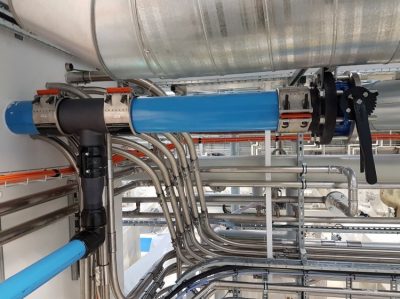
Do you need a Pipework system for your Compressed Air System or does your existing Pipework System need updating?
Piping is an essential part of your compressed air system. Inadequate compressed air piping systems will lead to high energy bills, low productivity, pressure drops and poor performance.
Air4u Group provides free consultations on Compressed Air Systems and will help you to design a Pipework System to suit your needs.
We supply a variety of Compressed Air Pipework
We offer many types of pipework from modern aluminium to traditional galvanised, stainless steel and plastic. All our pipes are compliant with the latest health and safety pressure regulations.
AIRnet™– Our preferred choice for your Compressed air piping system.
AIRnet™ is a fast, easy and reliable piping system, designed for compressed air, vacuum, and other inert gas applications from the source to the point of use.
Aluminium Piping -available in sizes up to 158mm diameter (6”)
The standard for any industrial application. Aluminium has become the industry standard for complete compressed air piping systems because it is anti-corrosive and lightweight, and easy to handle.
Our engineers find installing AIRnet aluminium piping system is easy, safe and quick to install compared to traditional welded and threaded systems.
The AIRnet™ compressed air piping system complements compressed air projects by delivering high-quality air, at the right pressure and at the lowest possible cost. AIRnet is a reusable aluminium piping system designed in line with EN 13480-3 to deliver a fast, easy, and reliable distribution network for Compressed Air, Nitrogen, and Vacuum.
- One person can safely handle and install the AIRnet aluminium pipework.
- While solid and robust, aluminium AIRnet pipes weigh five times less than galvanized pipes.
- AIRnet is installed with simple tools. No welding, gluing, or crimping is required.
- Welding or lathe machines are a burden of the past.
- AIRnet offers a full scope of materials including pipes, fittings, and accessories.
- It is easy to modify.
- Considerable savings on the labour cost.
- AIRnet™ consists of high-quality elements and distinguishes itself through flexibility and ease of installation.
- A smooth inner aluminium surface provides more air flow with less pressure drop.
Stainless Steel Piping – available in sizes up to 100mm diameter (4”)
This is suitable for demanding environments. AIRnet™ Stainless Steel piping system ensures 100% oil-free air delivery from the generation to the point-of-use, in compliance with the highest quality standards.
Thanks to its anti-corrosive properties, stainless steel piping can be installed in demanding production environments like pharmaceutical, health, food and beverages, and process industries.
Key features
- No corrosion, leak resistant and 10 years guarantee.
- Press fit system ensures fast installation with minimal tools.
- No welding, no threading: just push & press Silicone free system.
- FKM Seal (approved by all international regulating bodies for Pharma, F&B).
- Can be used for clean room applications (316 L).
- Considerable savings on the labour cost.
In line with the high-quality performance of the AIRnet product range, we provide our customers with a 10-year guarantee.
If you would more information or a free quotation, please follow this link to send us an email: sales@air4ultd.co.uk
Find and Fix that Leak
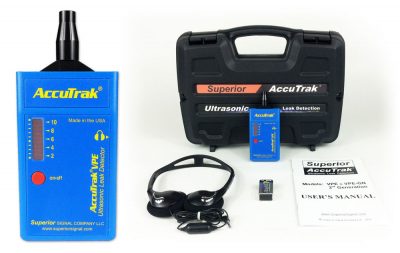
All compressed air systems have leaks. Leaks are often ignored since they are not an immediate health and safety hazard but reducing air leaks is the single most important energy saving measure you can take.
Leaks are a significant source of wasted energy. It’s not uncommon for 20-30% of the compressor’s output to be wasted. A typical poorly maintained plant will have a leak rate equal to 20%+ of total compressed air production capacity. On the other hand, proactive leak detection and air compressor repair can reduce leaks to less than 10% of output.
As you know, leaks are worse with higher pressure. By reducing system pressure, your system will require less energy and also lower the leakage rates. Plant header pressures should be as low as possible to support the process because it minimizes compressor energy use and leakage.
Compressed air leaks can contribute to problems with system operations, including:
- Fluctuating system pressure can cause air tools and other air-operated equipment to no function correctly, negatively affecting production.
- Excess compressor capacity, resulting in higher than necessary costs.
- Decreased service life and increased maintenance of supply equipment (including the compressor package) due to unnecessary cycling and increased run time.
- a noisy environment for staff.
Common leakage sources are:
- Air-using equipment left running when not needed
- Quick Release Couplings
- Hoses
- Tubes
- Fittings
- Pipe Joints
- FRLs (filter, regulator, lubricator)
- Condensate Traps
- Valves
- Flanges
- Packing
- Thread Sealant
- Point-Of-Use Devices
Identifying and Measuring leaks
Initially conduct an out of hours survey and walk the site listening for leaks, when the whole plant is sufficiently quiet that large leaks can be audible. Smaller leaks can be below the threshold for hearing and therefore the absence of the hiss of leaking gas does not mean that there are no leaks. Since air leaks are almost impossible to see, other methods must be used to confirm their location. Ultrasonic leak detection is probably the most versatile form of leak detection, but you can also use a soap solution brushed onto pipe fittings and look for bubbles, or a leak detection spray.
Handheld ultrasonic leak detectors are the best way to detect leaks whilst production is running. (Be aware that some dryer types have purge cycles which use air as part of their function).
Once you have identified where there are leaks, we can help. Our compressed air team can repair problem areas. We can assess your system to ensure your air compressors, dryers, storage, regulators, distribution and point of use equipment is right for your application.
As part of a good practice, we recommend compressed air users implement a leak management programme as follows:
- Tag the leaks and record on a site plan
- Grade the priorities - it could be as simple as 1,2,3
- Fix the largest leaks first
- Encourage users to report leaks
- Repair all leaks as soon as practicable
Regularly monitor your system
Leaks need to be monitored constantly. To minimise losses, carry out a leak survey at least twice a year to keep the problem under control. If you have insufficient in-house resources, we can offer a leak management service.
Top Tips
- Have an ongoing leak test and repair programme.
- Leaks reappear and a 3mm hole could cost over £600/year in wasted energy.
- And finally...
- Once you have repaired the leaks, check the pressure drop from the compressor to points of use as you may be able to reduce the generation pressure at the compressor.
- Otherwise, fixing leaks could increase the pressure and the predicted savings will not be realised.
- Also, the increased pressure could create more new leaks.
- Ensure you maintain the whole system
Effective maintenance is essential to energy efficiency. Cutting back on maintenance is a false economy, because doing so increases the energy consumed, decreases service life, and reduces equipment reliability.
In order to monitor the leakage rate, consider installing permanent flow metering. This is also an effective way of identifying any changes in consumption which need further investigation.
Pressure Systems Safety Regulations 2000 (PSSR)
In addition, the law requires all systems operating at greater than 0.5 bar with an air receiver installed, to comply with the Pressure Systems Safety Regulations 2000 (PSSR). Regulation 12 of the PSSR requires that compressed air equipment be properly maintained to minimise health and safety risks associated with a pressurised system.
Check out our News Blog regarding this: https://www.air4ultd.co.uk/what-is-a-written-scheme-of-examination/
